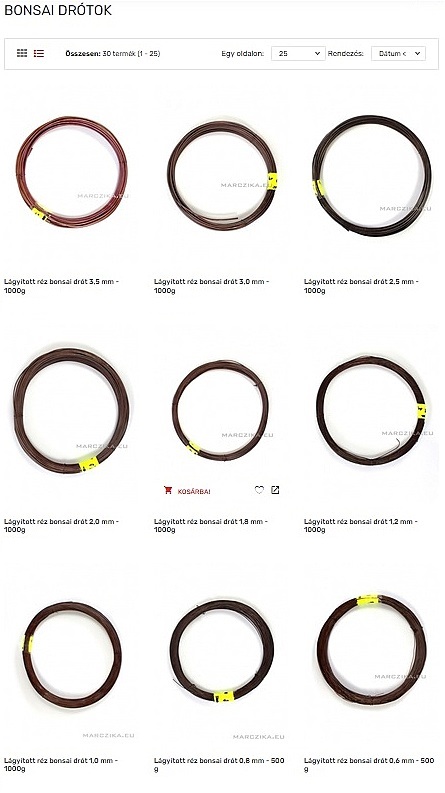What wire to use for bonsai shaping? - Aluminum vs. copper
|
What wire to use for bonsai shaping? - Aluminum vs. copper? Yes, it is certainly an issue of aluminum and copper wire, but we are not rushing so far forward because it is necessary to clarify one or two things first, what are the “expectations” of bonsai trees for wires. The wording is not accidental, as all issues related to bonsai shaping and care should be approached primarily from the point of view of bonsai needs. What should the bonsai wire used for bonsai shaping look like?Be soft: The wire used to shape the bonsai should be soft even if thicker branches need to be bent. There are two main reasons for this. One is to make it easy to work with and not to damage the tree’s bark in the slightest when winding up on the branch. The other is that it should be easy to remove so that the branches that have just been set up do not have to be tormented by wire removal and it is good to load the wire cutting scissors only to the required extent and not torture the edge with a steel wire. Be the right thickness: The main principle when using bonsai wires is to place a thick wire on each branch that is about one-third the diameter of the branch. Of course, this can sometimes lead to small differences, but the main principle is this. This ratio is otherwise the case for both copper wires and aluminum wires. Using a wire that is too thick not only shows an ugly overall picture but can easily break the wired branch with it. If you use too thin a wire for each branch, the branch you want to form simply will not remain in the bent shape / direction. Never light by color: Bonsai wires are usually dark brown or copper in color. This is because this color scheme is the least striking on a bonsai branch system. If using light-colored or silvery or aluminum-colored wires would light visibly and not very aesthetically between the branches. If you like this wiring incognito... Be bonsai wire! What is bonsai wire? Bonsai wires are theoretically no different ... or are they? We distinguish two types of bonsai wire. One is made of aluminum and the other is made of copper. Both types of wire softened - which is essential. In addition to softening, the aluminum wire is given a brownish color by anodizing - so that it does not lighting on the branches. These wires are easily and well cut by bonsai wire cutters and are easy to work with due to their softness. If you want to take a look at our offer or just buy bonsai wire, click on the picture! Copper wire and aluminum wire? Which one is it for? There are primarily aesthetic reasons for this question and secondly practical reasons. In an aesthetic sense, copper wires melt completely into the spectacle on the branches of pine and juniper bonsai, and aluminum wires are commonly used for deciduous bonsai. In practice, copper wire would be too hard for deciduous plants and it is feared that it will damage the bark of deciduous wood in too many places. Copper wire for pines and junipers, and aluminum wire for deciduous! That's right. This is the most accepted and proven and this choice principle will have the most aesthetic result after the bonsai is shaped.
|
|
USE THIS! If you like to grow yamadoris or make bonsai from pre bonsai trees, this bonsai growing pot can be a practical help. |


.JPG)
.JPG)

.JPG)
.JPG)




0 hozzászólás